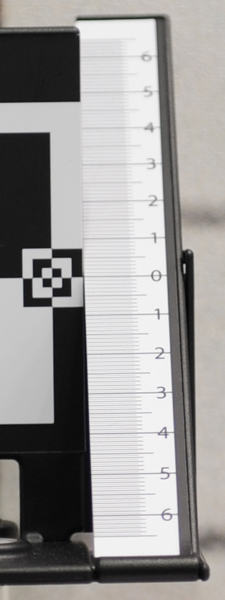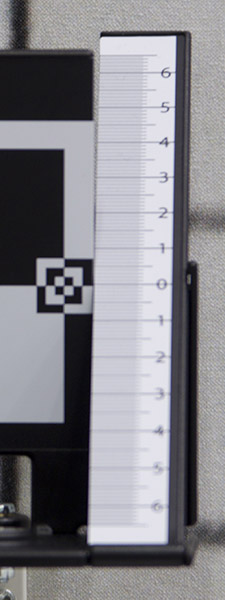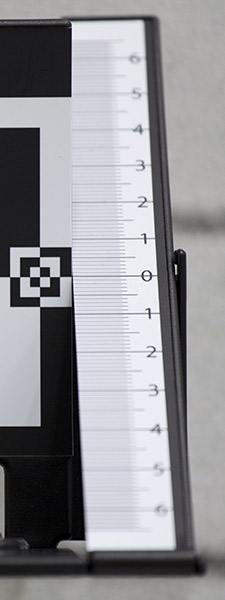(reposted from Datacolor’s website) This is the first of a two parts article: today we see why we need to calibrate, and in the next one we’ll see how to do it.
Calibrating the autofocus? Do I really need it? Can I do it myself? The answer is yes to all of the above questions, but there are a few considerations to make, so let’s start from the beginning.
Although we like to think our brand new camera and lenses are perfect out of the box, real life says it doesn’t always work that way. How many times while shooting a portrait, have we’ve focused on the eye, and the real sharper point was an eyelash or worst, the nose or the ear?
Simply put, even if the camera detects the subject (i.e.) 2 meters away and tells the lens where to focus, for several reason the lens might focus (i.e.) at 2,10 or 1,90 meters. In this case we have what is called back-focus and front-focus: reasons vary from production tolerances, focusing repeatability, the age of the lens, the usage of the lens (obviously a lens always mounted on the camera and used on a daily basis is more prone to loose precision than a lens always in the bag…) and climate conditions (lenses might react differently in very warm or in very cold conditions). Technically, to correct the front or back focus we do not change the lens behavior, we simply tell the camera through the menu to compensate the focusing error (if any.)
Not that I had many doubts regarding the real need to calibrate a “camera-lens combination” (from now and on, we’ll call it CLC): during Photokina 2010 I worked with Datacolor for the launch of SpyderLENSCAL, and in this occasion I spent a week calibrating about 1000 customers lenses per day: a few thousands CLC later, here is what I found out (and I am still recovering form the shock…)
- 78% of CLC needed to be calibrated. No brand is immune: Canon, as Nikon or Sony or Pentax are all affected. Note that in this percentage are included some cameras and lenses that just came out of the box…
- 95% of the CLC needing calibration could be fixed using SpyderLENSCAL, while 5% of lenses where focusing so badly that only a lab service would eventually fix the problems. A well beaten-up 28/300 Canon zoom lens on a Canon EOS 1D Mark IV wins the prize of worst performer, boasting an 80 cm error in focusing (yes, 31,5 inches!)
- A little more than 20% of CLC focused fine (although, for the reasons listed above, at one point might need calibration too.)
- Most of the cheap tele zoom lenses (70/300, 50/250, and so on) have such a bad definition at the longest focal range that is difficult to determine what is in focus and what is not.
Still hard to believe, right? No problem. I have proofs! Check the following series of images from Photokina. All of the raw files have been converted into jpeg using Adobe Camera Raw without doing any kind of correction, only making sure White Balance is the same for every CLC (sometimes Auto White Balance did not give same results).

Image 1, for example, shows a Nikon D700 with a 24/70mm lens, shot with the widest aperture at the longest focal length. The sharper area of the image should be number 0 on the ruler. As we can see we have front focusing, about 3,5 cm: that means if you focus on the eye you will get the nose sharp!

Image 2 is taken with a Canon Eos5D MkII and a 50mm f1,2: note the very strong back focusing, around 6 centimeters (note that most of 50 mm tested, regardless the brand, had a strong back focus)

Image 3 is one of the few cases where a SpyderLENSCAL calibration couldn’t fix the problem (a lab service is the only option in this situation). In this image shot with a Canon Eos1D MkIV and a 28/300mm zoom lens at a focal length of 200mm, the sharpest area of the image is the wall in the background… about 30 cm from the SpyderLENSCAL… this is definitely back focus! When used at a focal length of 300mm, the back focus was almost 80 cm. A record! (a bad one, actually…)

Image 4 is one of the CLC falling in to the 20% percentage that do not need calibration, due to the perfect and sharp focusing. It is shot with a Canon Eos5D MkII and a 70/200 f4 zoom at 200mm. Finally a good one!
So, what do we get from this experience?
- Unfortunately, even expensive cameras and lenses might not focus properly, and we probably need to calibrate the autofocus.
- Luckily, SpyderLENSCAL is an easy fix for most problems. Again, if you are not clear on how to use it, don’t worry, in the next article all steps will be explained.
As a side note, I also discovered the SpyderLENSCAL is a very useful tool to check the quality of a lens: while in a big photo retailer for a SpyderLENSCAL demo, we realized that on the same camera body, different types of the same lens model give different results in terms of image quality. For example, testing a Canon EOS 5D MarkII body, 3 different models of Canon zoom EF 24-105 L f4 IS ended with different results, and all lenses came out of the box! From now and on, I’ll never buy a lens before testing a few units with my SpyderLENSCAL!
NB
CLC listed above are chosen solely for the purpose of demonstration. Files are converted from the original Raw files without modifications. There is no intention to assume that one brand or model is better than another one. Also, for privacy reasons, all metadata from the images in the article have been removed. All images in this article are copyrighted and may not be reproduced in any way.